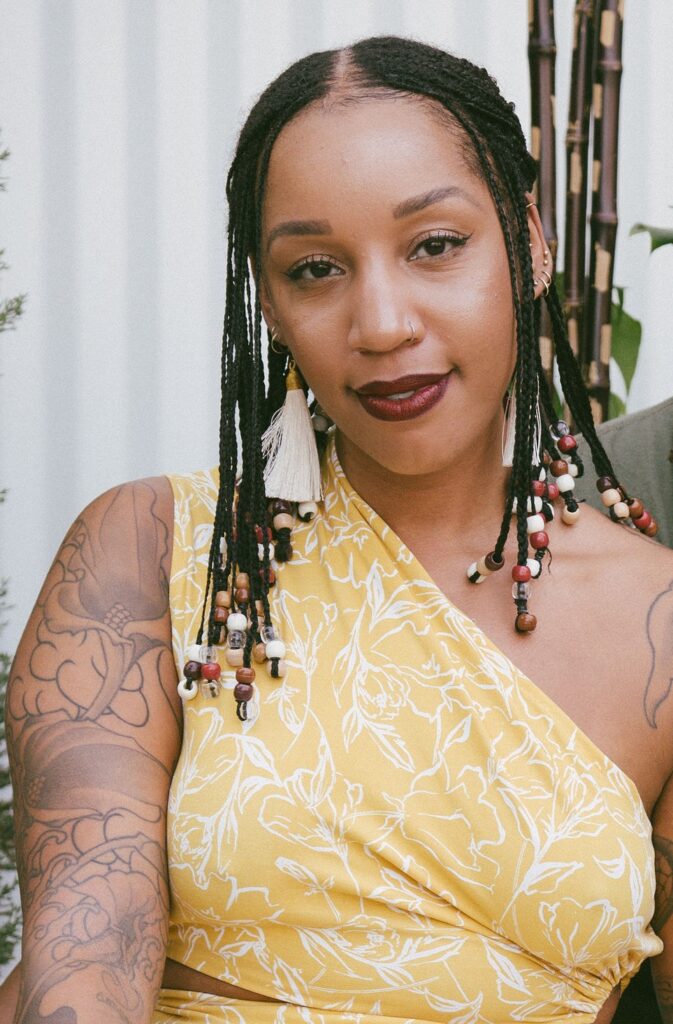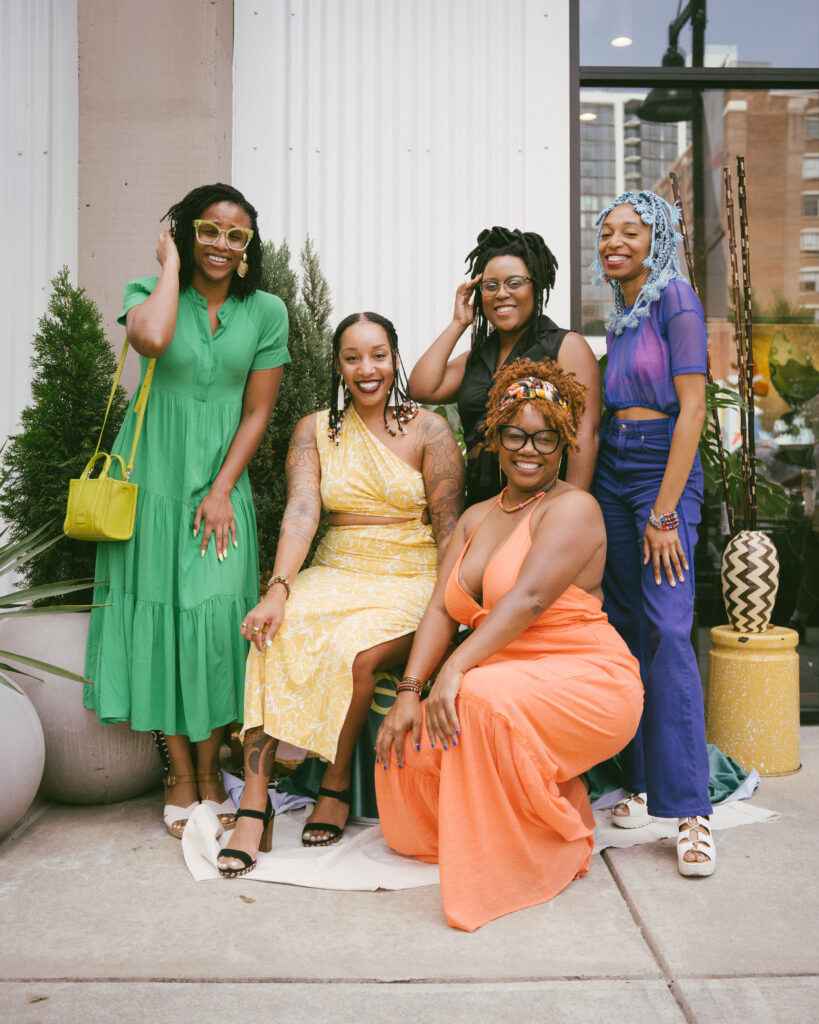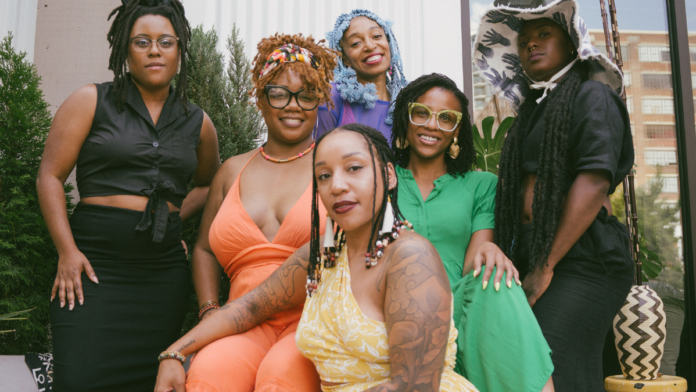( ENSPIRE She Did That ) Tiffany LaTrice Receives $100,000 Grant
ENSPIRE Contributor: Gabrielle Maya
Black women in art are finding opportunities to elevate their careers. Tiffany LaTrice is one of those driving forces who has given them a platform to shine and be recognized. The executive director of TILA Studios, LaTrice, runs a Black women’s visual arts collective. She has been commissioned to create the physical award for the BET Her Awards and Crown Awards, which Dove presented during Essence Fest. Currently, she received an unrestricted $100,000 grant from MailChimp.
In addition, LaTrice has opened up larger conversations about funding arts programs and their importance. One of her accomplishments was being a part of a group of leaders in the Atlanta arts community. Her advocacy for the arts was able to push the increase of its art spending to over 2 million dollars. ENSPIRE had the opportunity to talk with LaTrice to dsicuss Black female artists, TILA Studios, the economics behind art funding, the #AboveFour Campaign and more.

How would you describe art created by Black women or women of color to someone who has never seen it?
The beautiful thing about art is that you can’t categorize it or label it. There is an underlying assumption that Black Art has to represent Black people or tell Black stories. With this limited assumption in mind, there is an expectation that art by Black women can only have a certain aesthetic, meaning that Black female artists can only tell stories about Black women in their artwork. That is an entirely false narrative that TILA Studios always tries to eradicate. We seek to showcase artists who explore many themes beyond Black stories in their work. Black art has no boundaries. Black women artists can work in the abstract form, tackle surrealist methods, be figurative, and be elusive. If you try to put Black women artists in a box, a certain category, then we are perpetuating the American tactic of always categorizing something or someone by race. Art transcends race and gender, so you cannot label or describe art by Black women with one word or specific definition.
What is TILA Studios and its mission of giving Black female artists opportunities to showcase and give them a safe space to present their artistic visions?
TILA Studios was created because I experienced barriers to entry in the art industry. While selling my work online, galleries would not showcase my art or allow me to exhibit. I am the problem I am trying to solve. I needed opportunities, so I created them by creating TILA and opening doors for other Black women. I wanted a space just for us. A space to dream and experiment without the expectation of perfection. Our first space opened in 2016 and closed in 2019, just before the pandemic, hosted over 15 exhibitions for Black women, and served over 500 Black female artists in Atlanta. These women have gone on to international exhibitions and collectors, museum, and gallery shows, and have been selected for award-winning fellowships and residency programs. It’s incredible to witness women gain their confidence by having the support and resources to present their work in a space that is solely for Black women. Our space is reopening in 2024 in the heart of midtown at the Goat Farm Arts Center. We are excited to welcome artists, collectors, and supporters of the arts.
What are the economics behind arts funding? What makes it challenging?
Georgia is 49th in the country for Arts Funding. Many long-standing arts organizations that have been operating for over 25 years or more only operate at or just above a 1 million dollar budget. This means that organizations are under-funded and under-resourced, leaving the staff to work at capacity and not having the bandwidth to sustain themselves, leading to burnout and artists feeling not supported. Our city and state funding is incredibly low – where hundreds of arts organizations have to seek grants from a small pool of funding and grants often issued are between $5,000 and $20,000. The labor to apply for such small grants doesn’t cover expenses and barely supports an organization’s program and its staff. So where do you go? TILA Studios is a for-profit artists organization and instead of seeking philanthropic dollars, we have secured venture funding and sponsorships to help fund our organizations. 90% of our funding sources come from out of state. We have been able to survive and grow because we realized that if we only looked within GA, we would not have the impact that we currently have and eventually burnout because of the competitiveness of grants.
Please explain the #AboveFour Campaign and how it has changed the narrative within the art community so far.
Only 4% of Art across museums and galleries in the United States is from Black women artists. We launched the campaign in 2018 to share Black women artists who have been doing this work for years and even decades but are often not getting the flowers and recognition that they deserve. We wanted to not only bring awareness to this statistic but also show that Black women have been working in the industry for years. We wanted to highlight their work, their voices, and their artistic contributions and gather Black women in person to connect and uplift each other. When Black women show up and convene in numbers, you can’t help but acknowledge and see them. We want black women to move from the margins to the front lines – taking up space they much deserve.
Tell us about your collaboration with Charis Books & More to create this Bookshelf centered on the arts.
We forged a partnership in 2018 with Charis Books & More, a feminist bookstore located in Decatur right outside of Agnes Scott College. This partnership was created by TILA’s former assistant and community manager, Datricia Rollins & Sierra King. They were avid readers and saw the relationship between literature and art as deeply interconnected. Words are a way to document and archive a story. We wanted to share books by Black women for Black women so that there can exist a dialogue between the artists and the author, the work, and the written word. We wanted to expand our language and our minds about how we discuss, dissect, preserve, and archive our work. While the partnership has yet to be as active, we hope you discover books by browsing the bookshelf on our website and purchasing books that are meaningful to your practice.
What can Black female artists look forward to when entering the Garden Fellowship?
When Black women artists enter the Garden Fellowship, they can look forward to building lifetime relationships with 4 other black women artists whom they have never met before. The most significant opportunity that comes from the fellowship is sisterhood. Black women have always supported each other for decades. If we bring the right women together, they can be each other’s champions, backbone, shoulder to cry on, and dot-connected for opportunities.
The fellowship is just the vehicle that fosters the connections and brings 5 dynamic Black women closer to achieving their dreams.

What policy solutions should we make to increase funding for Black arts and close the inequity gap?
An opportunity that Georgia could benefit from is enacting the 1% art policy that major cities and states like New York and Washington enact. For example, New York has the Percent for Art Program that allows City agencies to acquire or commission works of art specifically for City-owned buildings throughout the five boroughs. Washington State has an ordinance that directs publicly-funded construction projects, with costs exceeding $100,000, to allocate one percent of the project budget for public art. When 1% of construction projects are earmarked for the acquisition or project budget for public art, it creates more engaged communities, employs artists, and ensures that neighborhoods reflect the community they serve. There is so much construction happening in Atlanta and Georgia.
It is becoming an art and entertainment epicenter. While the city grants significant tax breaks to new businesses to come and do business in the city, there needs to be more accountability to support and sustain the arts in its backyard. Suppose we don’t prioritize artists and their contributions by increasing funding or creating a 1% art policy and ordinance. In that case, we will see just empty buildings without the heartbeat of the city – culture. I love Atlanta and admire how it’s grown, but art is the tool that unifies and unites us all.
LaTrice is closing the inequity gap for black female artists everywhere. To show your support, use #AboveFour and join the conversation. For more information about Tiffany LaTrice, follow her on Instagram or visit TILA Studios.
Related Articles: Howard University’s, Chadwick A. Boseman College of Fine Arts, Indigenous Arts Gallery at Tucson Museum of Art Creates A Community-Based Approach To Exhibition Development







